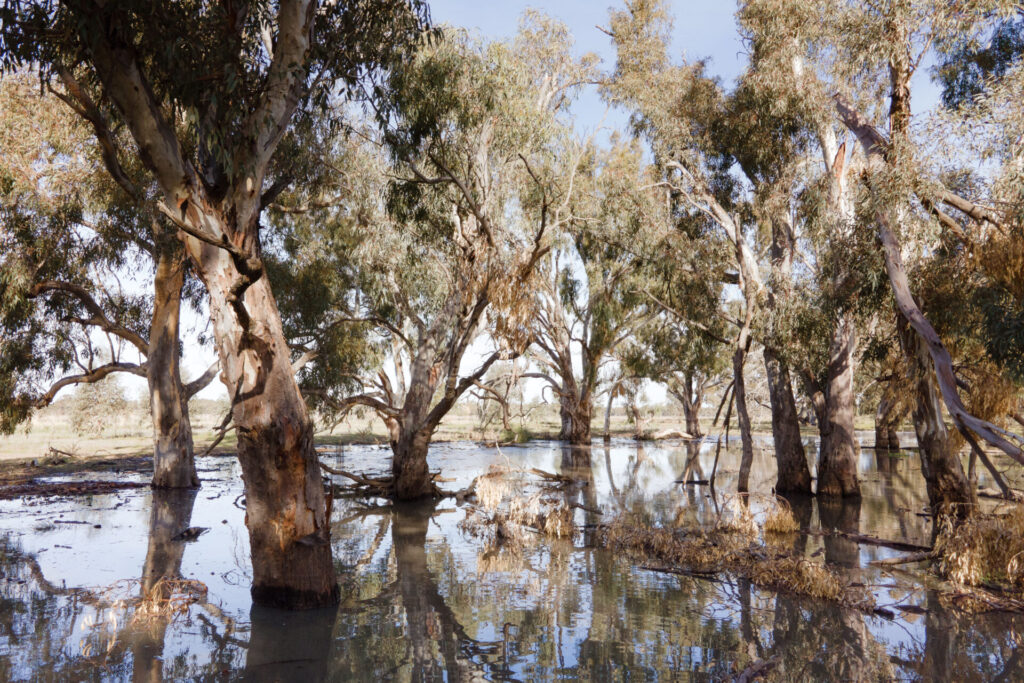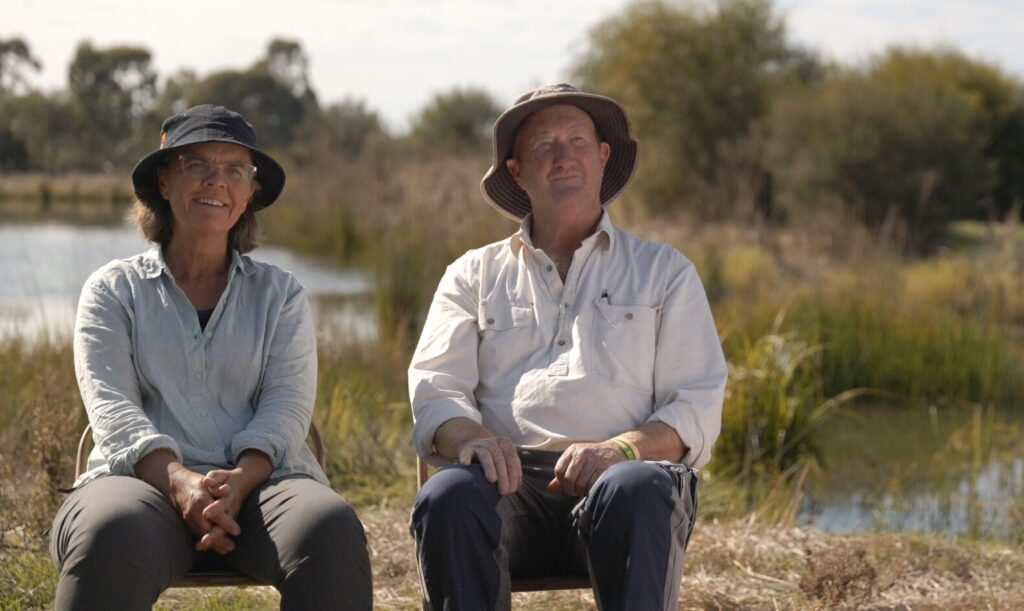Farmer Jo Bear talks to ABC Radio about why restoring wetlands just makes sense for her farm
Jo is a participating landholder the Wetland Revival Trust project “Boosting drought resilience in the Lower Loddon Landscape: If you look after nature, nature can look after you”.
Jo Bear and her husband Greg run 4,000 Marino ewes at Canary Island near Kerang and have been working with Wetland Revival Trust to restore wetlands on their property. Jo says wetlands fit well with sustainable and regenerative agriculture, increasing plant and animal diversity, and providing a cooler and more diverse environment.
https://www.youtube.com/watch?v=aQA8JZHBM1o
A Family Connection
Jo’s connection with wetlands traces back to her father, who built a wetland during the millennium drought, deriving enjoyment and well-being benefits.
“I’ve always been interested in wetlands. My father built a wetland around sort of the millennium drought time and got a lot of enjoyment and wellbeing benefits from having that, especially during the drought.”
Working with Nature
When Jo moved to Canary Island, the realisation that the area was historically rich in wetlands prompted her to integrate wetland riparian areas into her sustainable and regenerative agriculture practices.
“When I got married and moved up to Canary Island, we quickly realised that it’s on a floodplain and so historically that would’ve had lots of wetlands involved in that.
Our farming is very much based around sustainable agriculture, regenerative agriculture, and utilising our natural pastures. Having a wetland riparian area just fit with increasing diversity of plants, increasing diversity of animals, insects. It just all fit with how we wanted to just work with nature.”
Restoring Wetlands Impacted by Irrigation Practices
WRT is working with the Bear family to restore two wetlands impacted by irrigation practices and river regulation.
“We purchased another a little block right on the Loddon River and worked with an ecologist who walked that and using imagery and also his expertise said, look, I think there’s some areas here that would’ve been wetland, but with the change of irrigation and river flows, they’re not getting any water anymore. And you could see that the Red Gums were really battling. Damien and his team have re-vegetated it all, and we’ve got water in it and it’s been amazing.”

Harvesting the Holistic Benefits
Since beginning the project with WRT 18 months ago, Jo has already seeing benefits
“We just can’t believe how lush it feels and much cooler, obviously it’s a carbon sink as well, but just for our wellbeing. We noticed the stock is around that area and it provides a greater diversity of species insects. We’ve got dragonflies at the moment that are attacking the mosquitoes, so that’s really good. It gives more of a holistic feel to our farm. We feel that rather than using pesticides or chemicals, maybe we just utilize a natural environment to help us work.
There’s lots of connection when you’re planting and just being outdoors in nature. It is amazing how you can just have really nice conversations.
This area is known for wetlands and lakes and rivers and creeks, so I think every farmer has probably got sort of a little mini wetland or a lake that they’d like to do something with. I think everyone just wants to learn more about it. Our challenge is that a lot of landholders up here just don’t know where to start. So that’s where it’s been so exciting for us to work with Damien and the Wetland Revival Trust to gain knowledge about how to work.”
Follow the Bear’s Farming and Restoration Journey
You can learn more and follow the Bear’s restorative farming journey on their Instagram @bearandtwigg www.instagram.com/bearandtwigg/
About the Project
Jo is a participating landholder the Wetland Revival Trust project “Boosting drought resilience in the Lower Loddon Landscape: If you look after nature, nature can look after you”.
This project received funding from the Australian Government’s Future Drought Fund, through the Drought Resilient Soils and Landscapes grants program. The project aims to enhance drought resilience on farms by restoring wetlands along the lower Loddon River floodplain. This project is trailing and monitoring the impact of ecological restoration practices at a landscape scale that will restore and maintain natural capital by re-instating more natural hydrology, increasing soil carbon and moisture holding capacity, restoring native vegetation cover and health, and providing biodiversity refuges.
The Murray Darling Wetland Working Group has generously provided support for this project through the provision of water to these wetlands.
This interview has been edited for length and clarity.

This project received funding from the Australian Government’s Future Drought Fund.

